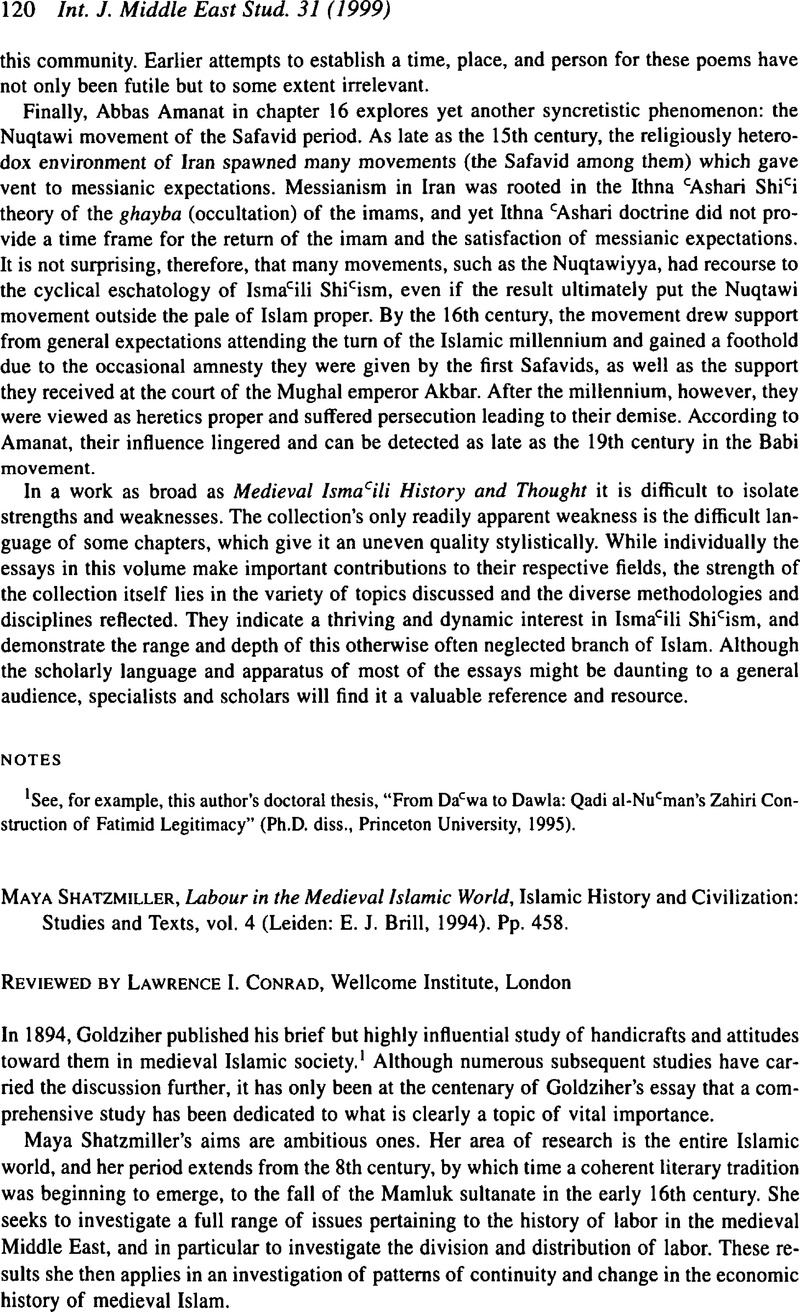No CrossRef data available.
Published online by Cambridge University Press: 29 January 2009

1 Goldziher, Ignaz, “Die Handwerke bei den Arabern”, Globus 46 (1894): 203–5.Google Scholar
2 As Shatzmiller concedes at one point, “Division of labour and specialisation in agriculture is generally low and unlikely to grow, given the fact that the farmer, with members of his family, or with the help of daily labourers, constitutes a single production unit, responsible for an array of tasks, including ploughing, planting, harvesting, raising animals, and the production and sale of both raw materials and items manufactured in their cottage industries” (pp. 176–77).Google Scholar
3 Grohmann, Adolf, Arabic Papyri in the Egyptian Library (Cairo: Egyptian Library Press, 1934–62), VI, 81.Google Scholar
4 Al-Jāḥiẓ “Risāla fi sināʿat al-quwwād”, in Rasaʾil al-Jāḥiẓ ed. al-Sālam, ʿAbdHārūn, MuḤammad (Cairo: Maktabat al-Khānjī, 1384–99/1964–79), I, 379–93.Google Scholar
5 Monès, Hussain, “Le rôle des hommes de religion dans l'histoire de l'Espagne musulmane jusqu'à la fin du califat”, Studia Islamica 20 (1964): 70.Google Scholar
6 Petry, Carl F., The Civilian Elite of Cairo in the Later Middle Ages (Princeton, N.J.: Princeton University Press, 1981), 343–402.Google Scholar
7 Cf. ibid., xix, expressing reservations about the statistical validity of the material, since so many items “appeared irregularly”; and p. 14, on how his materials “provide few evaluative or qualitative statements about many of the items they mention. The great majority of attainments—social, professional, or other—were simply listed without comment, on the assumption of common knowledge among contemporary readers”.
8 Ibid., 9, 11.
9 The comparison with Arabic lexicography is again worth bearing in mind.